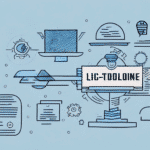Understanding Customer Drop-Off: Comprehensive Insights
In the realm of business, the term "drop-off" refers to the moment a customer or user ceases their engagement with your business. Understanding drop-offs is crucial for maintaining a healthy customer base and ensuring sustained growth. This article delves into the intricacies of drop-offs, exploring their causes, impacts, and strategies to prevent and recover from them. Whether you're an established business owner or just starting out, mastering the concept of drop-offs can significantly enhance your customer retention efforts.
Defining Drop-Offs and Their Significance
What Constitutes a Drop-Off?
A drop-off occurs when a customer or user disengages from your business activities. This disengagement can manifest in various forms, such as abandoning a shopping cart on an e-commerce site, unsubscribing from newsletters, or ceasing to follow your social media profiles. Essentially, any instance where a potential or existing customer withdraws their interaction can be classified as a drop-off.
Why Understanding Drop-Offs Matters
Drop-offs are more than just lost sales or interactions; they are indicators of underlying issues within your business. Analyzing drop-offs helps identify pain points in the customer journey, enabling you to make informed decisions to enhance customer experience and increase retention rates.
Common Causes of Customer Drop-Off
Website and User Experience Issues
Poor website performance, such as slow loading times or a complicated navigation structure, can frustrate users, leading to higher drop-off rates. According to ShipScience's latest report, websites with load times exceeding three seconds experience a 40% higher abandonment rate.
Lack of Trust and Credibility
Customers are more likely to disengage if they perceive a lack of trust in your brand. Factors contributing to this include negative reviews, inconsistent branding, and outdated website designs. Building and maintaining credibility through transparent practices and positive feedback is essential.
Inadequate Customer Service
Poor customer support can drive customers away. If users encounter difficulties resolving issues or receive unhelpful responses, their confidence in your business diminishes, increasing the likelihood of drop-offs.
Overcomplicated Customer Journeys
Excessive steps in processes like checkout or account creation can overwhelm customers. Simplifying these processes by reducing unnecessary steps can significantly decrease drop-off rates.
Identifying Drop-Offs in Your Business
Utilizing Analytics Tools
Tools like Google Analytics and Hotjar provide valuable insights into where and why drop-offs occur. By analyzing metrics such as bounce rates, exit pages, and user flow, businesses can pinpoint problematic areas.
Customer Feedback and Surveys
Direct feedback through surveys, reviews, and social media polls can shed light on customer sentiments and reasons behind disengagement. Actively seeking and analyzing this feedback is crucial for addressing issues effectively.
Benchmarking Against Industry Standards
Comparing your drop-off metrics with industry benchmarks helps contextualize your performance. It allows you to understand if your drop-off rates are within acceptable ranges or if they indicate deeper issues.
The Impact of Drop-Offs on Business Performance
Financial Implications
Drop-offs directly translate to lost revenue opportunities. For instance, a 10% increase in drop-off rates can lead to a corresponding decrease in sales, significantly impacting overall profitability.
Reputation and Brand Perception
Frequent drop-offs can harm your brand's reputation. Negative experiences shared by customers can deter potential clients, further exacerbating the issue.
Operational Strain
High drop-off rates may indicate inefficiencies in processes, requiring additional resources to manage customer relations and rectify issues, thereby straining operational capacities.
Strategies to Prevent and Recover from Drop-Offs
Enhancing User Experience
Optimizing website speed, ensuring mobile responsiveness, and simplifying navigation can significantly reduce drop-offs. Implementing intuitive design elements improves overall user satisfaction.
Personalizing Customer Interactions
Personalization strategies, such as tailored recommendations and customized communication, make customers feel valued and increase their likelihood of continued engagement.
Implementing Effective Retargeting Campaigns
Retargeting ads serve as reminders to customers who have previously disengaged, encouraging them to return and complete their interactions with your business.
Providing Exceptional Customer Support
Responsive and effective customer service can mitigate frustrations that lead to drop-offs. Offering multiple support channels and ensuring timely assistance enhances customer trust.
Offering Incentives and Rewards
Loyalty programs, exclusive discounts, and rewards for repeat business can incentivize customers to maintain their relationship with your brand, reducing the likelihood of drop-offs.
Best Practices and Examples of Successful Businesses
Amazon: Streamlined Shopping Experience
Amazon's personalized recommendations and one-click checkout process minimize friction in the purchasing journey, leading to higher conversion rates and reduced drop-offs.
Zappos: Superior Customer Service
Zappos excels in customer service by offering hassle-free returns and 24/7 support, fostering trust and loyalty among its customers.
Spotify: Personalized Content Delivery
Spotify leverages user data to provide personalized playlists and recommendations, keeping users engaged and reducing churn rates.
Airbnb: Unique Customer Experiences
Airbnb offers personalized travel experiences and maintains high customer service standards, ensuring repeat bookings and sustained customer engagement.
Tools and Technologies to Track and Prevent Drop-Offs
- Google Analytics: Tracks user behavior and identifies high drop-off points.
- Hotjar: Provides heatmaps and session recordings to visualize user interactions.
- CRM Software: Manages customer relationships and personalizes interactions.
- AI-Powered Chatbots: Offers instant customer support and resolves issues in real-time.
- Survey Tools: Collects customer feedback to understand drop-off reasons.
The Role of Customer Feedback in Reducing Drop-Offs
Customer feedback is invaluable for identifying and addressing the reasons behind drop-offs. Regularly soliciting feedback through surveys, reviews, and direct interactions allows businesses to make data-driven improvements. Implementing changes based on customer insights demonstrates that you value their opinions, fostering loyalty and reducing the likelihood of future drop-offs.
Continuous Monitoring and Analysis
Drop-offs are not isolated incidents; they can occur at any stage of the customer journey. To effectively manage and minimize drop-offs, continuous monitoring and analysis are essential. By regularly reviewing analytics data and staying abreast of industry trends, businesses can proactively address potential issues before they escalate. This ongoing vigilance ensures that customer engagement remains high and that the risk of drop-offs is consistently mitigated.
Conclusion
Understanding and addressing customer drop-offs is pivotal for any business aiming to thrive in a competitive market. By identifying the causes, implementing effective strategies, and continuously monitoring customer behavior, businesses can enhance their customer retention efforts and foster long-term success. Utilize the insights and techniques discussed in this article to minimize drop-offs and create a seamless, engaging experience for your customers.




















